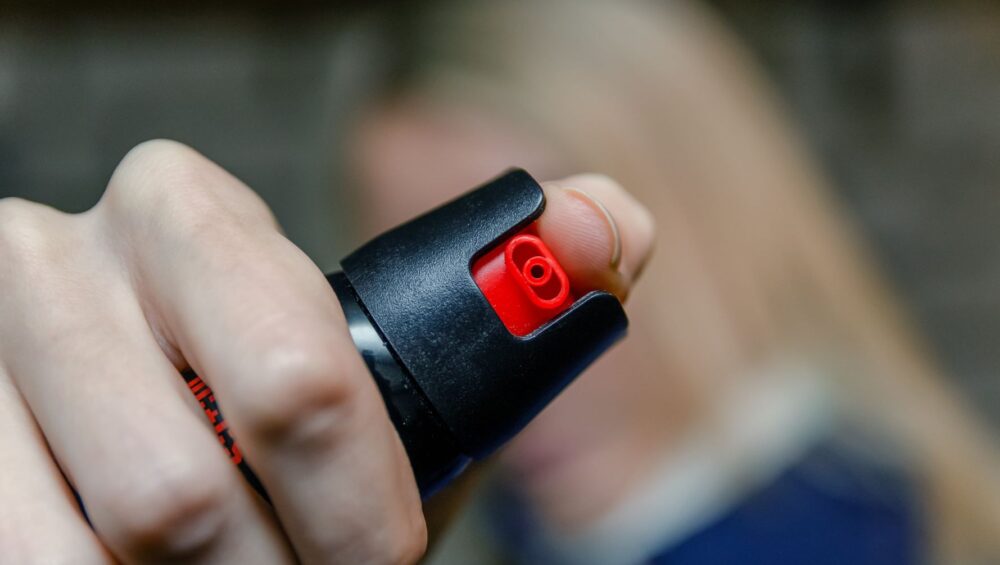How Do I Protect Myself as a Woman?
It’s an unfortunate fact of life that women face a disproportionate level of violence against them. Every woman knows the threats of a dark parking garage, the risks of walking home alone, and even just passing through an area they’re not familiar with. According to the World Health Organization, 1 in 3 women globally have experienced physical and/or sexual violence in their lifetime.
So how do you keep yourself safe as a woman? While cultural shifts in mindset and legal protection are necessary to end violence against women, here are some ways that women can avoid dangerous situations and keep themselves safe if they find themselves in one.
The Two Tenets of Self-Defense: Prevention and Preparation
When it comes to self-defense, there are two primary areas of focus: prevention and preparation.
Prevention
Prevention is the idea that the most impactful and effective way of avoiding danger is to prevent yourself from getting into a dangerous situation in the first place. Here are some everyday tips that can help keep you safe.
Be Aware of Your Surroundings: While this may seem straightforward, there’s a reason it’s on virtually every list of self-defense tips. Being aware of your surroundings means you are keeping an eye out for anyone who seems suspicious or threatening. Staying focused on your surroundings can also help you pinpoint locations where attackers may be hiding.
Lift Your Head: When walking around town, back to your car, between bars, or just heading home, make sure that your head is not buried in your phone and that you are walking confidently. Keeping your head down while texting or reading a map can distract you from your surroundings and signal to an attacker that you are not from the area and could be an easier target. On the other hand, according to a 1981 study by Betty Grayson and Morris I. Stein, people who walked confidently and “comfortably within the context of their own bodies” were rated by incarcerated individuals as less likely to be a target of assault.
Stick to Well-lit, Populated Areas: Dark, unlit areas are places of increased risk. When walking around, especially at night, aim for well-lit areas. Try to park your car underneath street lights or close to lighting fixtures in parking garages. Additionally, secluded and isolated areas are more dangerous because you are less likely to get someone else’s help. Avoid alleyways, parking lots, and other concealed areas, opting for more populated sidewalks and main streets.
Watch Your Drinks Always: Drugs like Rohypnol, GHB, and ketamine are commonly-used “date-rape drugs” employed by assailants to commit sexual assault. According to a survey conducted by Alcohol.org and the American Addiction Centers, 56% of women surveyed had unknowingly consumed food or drink that had been spiked, and 50% of the occurrences were by strangers. Never take a drink from a stranger at a bar, and never leave your drink unattended. Always watch the bartender prepare your drink and take it with you when you stand, dance, or go to the restroom. If you’ve left it unattended, get a new drink.
Preparation
Unfortunately, even when you have done your best to minimize your risk, you may find yourself in a dangerous situation. These situations are when the second tenet of self-defense comes into play: preparation. It’s crucial to prepare in advance and plan how to protect yourself.
Educate Yourself: One of the most important ways to prepare yourself is to take a self-defense class or other course to educate yourself on how to stay safe. One of the common misconceptions that people have about self-defense classes is that you will only learn how to fight. You will indeed learn physical techniques that can save your life. However, just as importantly, you may also learn psychological tips that can throw off an attacker or prevent them from attacking you in the first place. Some self-defense courses even discuss the legal implications of fighting with someone in self-defense.
For example, one of the first things taught in any self-defense class is that screaming is one of the most effective tools at your disposal for your protection. Your scream can let others know you are in danger and draw in help, preventing things from escalating or becoming fatal. Check out our piece on women’s self-defense in the United States to learn more.
Understand Smartphone Safety Offerings: With the advancement of technology and smartphones, there are more and more options that can keep you safe. Some phones have built-in safety features, like the “Call with Hold” feature in Apple iPhones that doesn’t require you to remove your phone from your pocket to dial 911. There are also smartphone apps that can offer you peace of mind and increased safety by alerting authorities with a simple click of a button or sharing your live GPS location with trusted contacts.
Buy a Self-Defense Tool and Know How to Use It: Another way to protect yourself as a woman is to purchase a self-defense tool and understand the best way to use it for protection. Some popular self-defense tools are kubatons, rings, pepper spray, stun guns, and personal alarms. Laws vary from state to state, so make sure to check your local ordinances before purchasing a specific self-defense tool.
Go Guarded was founded to offer women self-defense tools that are quickly available and can empower us to reclaim our confidence and freedom. Check out our line of simple-to-use and effective self-defense products endorsed by numerous 5-star customer testimonials.
The Bottom Line
At the end of the day, it shouldn’t be a woman’s job to make sure that she is safe. But until we see systemic change, we need to take care of ourselves and make sure that we do everything we can to prevent ourselves from being another victim of violence.
For more self-defense tips, check out our blog or reach out to our knowledgeable team of experts and have your questions answered on which self-defense tools may be best for you.







